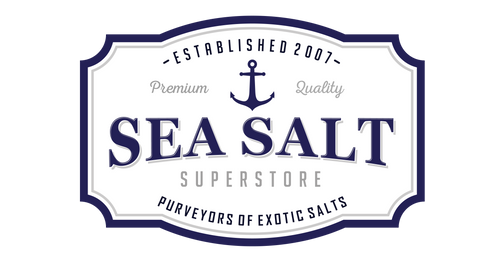Alaea salt is a distinct and culturally significant variety of sea salt that originates from the Hawaiian Islands. Known for its unique reddish color, this salt is an integral part of Hawaiian cuisine and traditions. The red hue comes from a specific volcanic clay called alaea, which gives the salt both its distinctive color and enhanced mineral content. Understanding why alaea salt is red involves exploring its production process, its uses in Hawaiian culture, and the properties that set it apart from regular sea salt.
The Role of Volcanic Clay in Alaea Salt’s Color
The red color of alaea salt is due to the presence of iron oxide in the volcanic clay used to make it. This clay is gathered from volcanic deposits found near the shorelines of Hawaii, where it has been naturally enriched with minerals over thousands of years. When sea salt is harvested from the Pacific Ocean, it is mixed with this red clay, creating a salt with a distinct reddish tint. The iron oxide is the key factor in this coloration, imparting the deep, earthy red appearance to the salt crystals.
The process is a traditional one, often passed down through generations of Hawaiian families. The clay is mixed into the salt during the harvesting process, and the salt is typically sun-dried to preserve its natural moisture and flavor. This method is not just a culinary technique but a part of the island's cultural heritage.
Flavor and Uses of Alaea Salt
The primary reason people seek out alaea salt is its unique flavor profile. Thanks to the volcanic clay, alaea salt has a more earthy and mineral-rich taste compared to regular sea salt. This makes it a favored seasoning for a variety of Hawaiian dishes, especially those that involve fish and meat.
One of the most popular uses of alaea salt is in poke, a Hawaiian raw fish dish, where it helps to balance the flavors of the fish, soy sauce, and other seasonings. It is also used in marinating meats such as pork, beef, and chicken, where its slightly savory, yet subtle, flavor enhances the natural taste of the ingredients. Beyond cooking, alaea salt is also used in Hawaiian ceremonial practices. It plays a role in rituals and blessings, and it is often sprinkled over food at traditional feasts (called luau) to honor guests.
Another traditional use of alaea salt is for salt curing—a method that preserves fish and meats. The salt’s mineral properties help in drawing out moisture from the food, a practice that was especially useful in ancient Hawaii, where refrigeration was not available.
The Health Benefits of Alaea Salt
Like many specialty salts, alaea salt is often touted for its mineral content. The volcanic clay adds trace minerals such as iron, magnesium, and calcium, which are believed to provide additional health benefits compared to regular table salt. Iron oxide, in particular, is thought to support healthy blood circulation and overall vitality. However, while alaea salt does contain more minerals than regular sea salt, the differences are relatively minor and should not be relied upon as a primary source of nutrition.
As with any salt, moderation is key. Alaea salt is still high in sodium, which can contribute to high blood pressure and other health issues if consumed in excess. Therefore, it’s best enjoyed as part of a balanced diet.
A Unique and Traditional Salt
Alaea salt stands out not only for its color but for its deep ties to Hawaiian culture and history. It is more than just a seasoning—it is a link to the land and the volcanic forces that shaped the islands. Whether used in cooking, ceremonial rituals, or as a natural mineral supplement, alaea salt carries with it a sense of place and tradition that makes it much more than just a flavorful addition to meals.
In conclusion, the red color of alaea salt comes from the volcanic clay that is mixed with sea salt during its production. The combination of natural sea salt and iron-rich clay creates a mineral-packed seasoning that is unique to Hawaii. Alaea salt’s cultural significance and its ability to enhance a wide range of dishes make it a beloved ingredient in Hawaiian kitchens and beyond.




